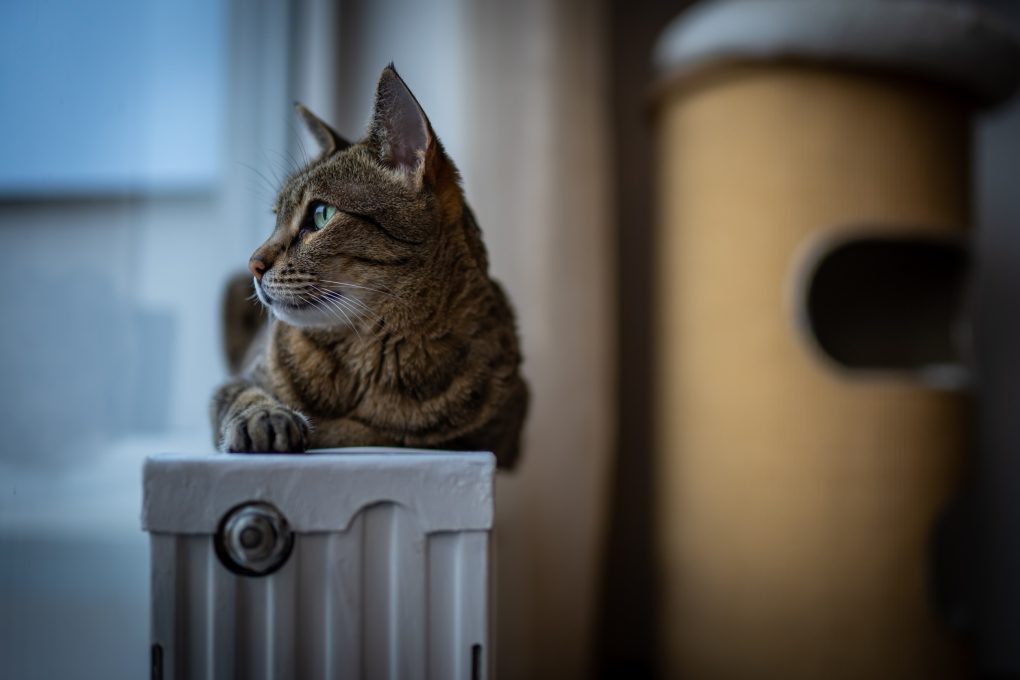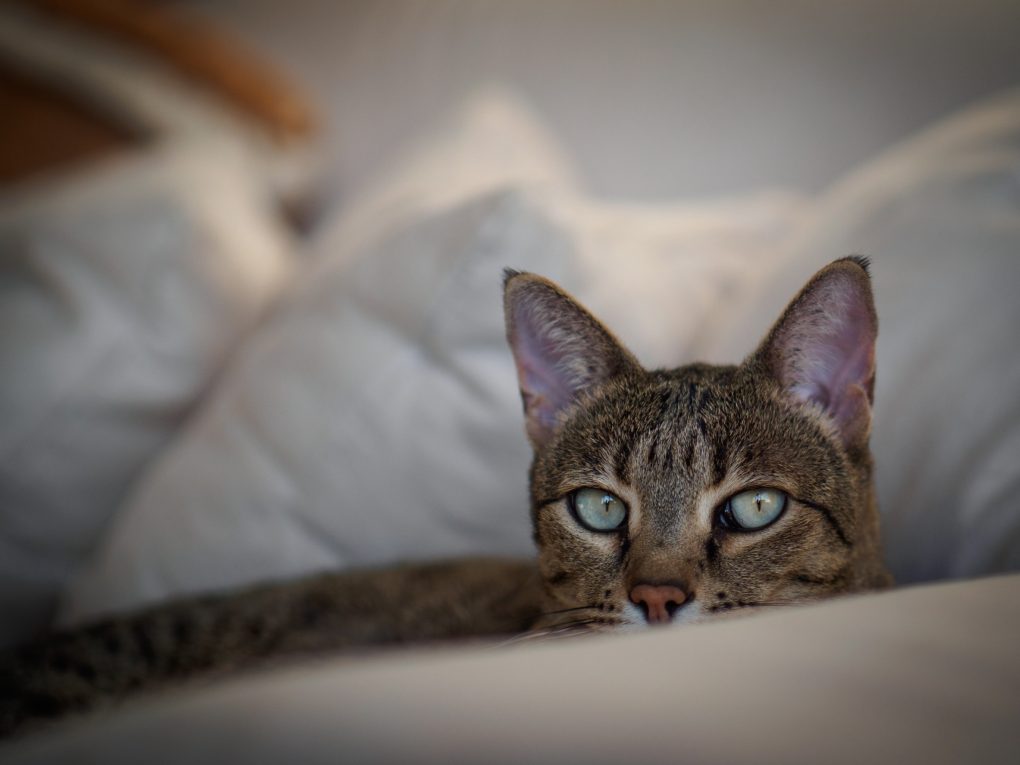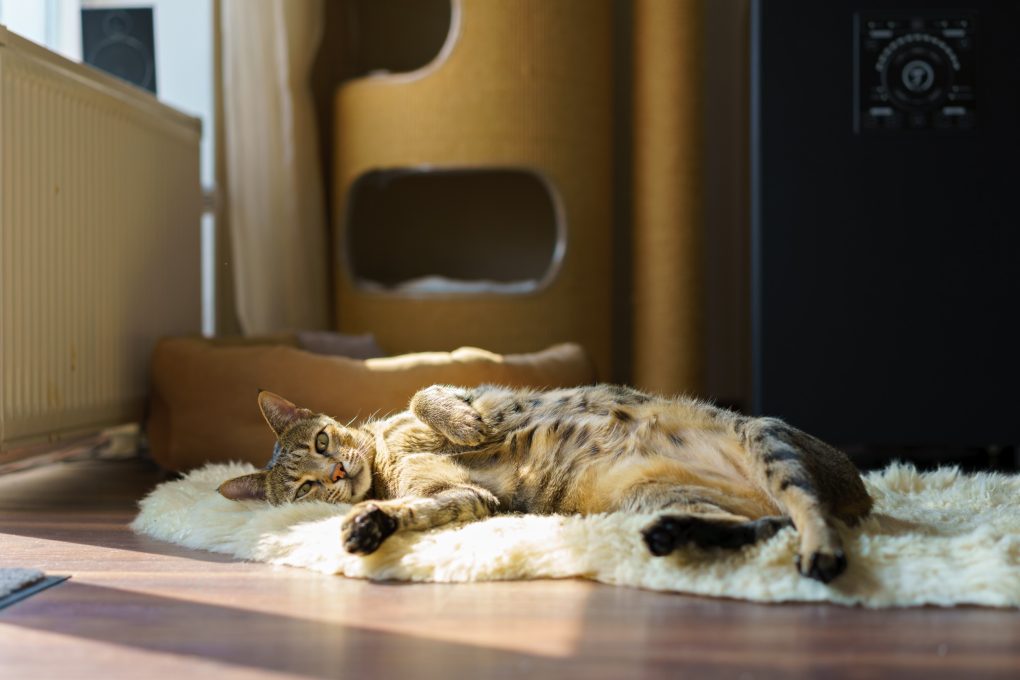How Big Do Savannah Cats Get: The Size of This Breed by Generation, Factors That Affect Their Growth, and Some Tips for Owners
Savannah cats can go as tall as 17 inches at the shoulder and as heavy as 25 pounds. Because Savannah cats are a hybrid that is a cross between a domestic cat and a serval, a wild African cat, this breed can be quite large compared to other domestic cat breeds.


The F1 generation, the first generation cross between a serval and a domestic cat, can be the largest and may have more of the wild serval’s size, appearance, and behavior characteristics. The later generations, such as F2 or F3, may be smaller than the F1 generation.
Table of Contents
Savannah Cat Size by Generation
F1 (First Generation)
F1 Savannah cats are the first-generation cross between a domestic cat and a serval, and they tend to be the most wild-looking and largest of all the Savannah cat generations. Cats from this generation weigh roughly 25 pounds.
The size of an F1 Savannah cat can vary depending on its breeding and genetics, but they are generally much larger than a typical domestic cat. They are often described as tall and lean, with long legs, a slim build, and a distinctive “wild” appearance.
It’s important to note that F1 Savannah cats are typically more extensive and more exotic-looking than other Savannah cat generations. However, they can also require more specialized care and attention due to their wild ancestry.
Before bringing an F1 Savannah cat into your home, it’s essential to talk to a reputable breeder and research to ensure that you can provide the right environment and care for this unique and special breed.
F2 (Second Generation)
F2 Savannah cats are the second generation cross between a domestic cat and a serval, and they are typically smaller than F1 Savannah cats. The size of an F2 Savannah cat can vary depending on their breeding and genetics, but they generally weigh between 16 to 25 pounds and are 20 to 22 inches long.
F2 Savannah cats are still quite large compared to a typical domestic cat, but they tend to be more manageable than their F1 counterparts. They may retain some of the distinctive characteristics of the breed, such as their long legs and large ears, but are generally tamer and easier to care for than F1 Savannah cats.
However, the size and temperament of an individual cat can vary depending on various factors, so it’s vital to ensure that you can provide the right environment and care for this unique and special breed.
F3 (Third Generation)
The third-generation cross, F3 Savannah cats, are more petite than F1s and F2s and may weigh between 3 to 19 pounds. F3 Savannah cats are closer in size to a typical domestic cat, but they may still retain some of the distinctive characteristics of the breed, such as their long legs and large ears.


They are generally tamer and easier to care for than F1 and F2 Savannah cats but may still have a higher activity level and require more space and attention than a typical house cat.
F4 and Beyond
As Savannah cats continue to be bred with domestic cats, their size tends to stabilize and become more consistent. F4 and later generations are typically smaller than F1 to F3 and weigh an average of 15 pounds.
Savannah cats of all generations are known for their energetic and social personalities, but earlier-generation cats may be more challenging to care for due to their wild heritage. In contrast, F4 and beyond Savannah cats are tamer and easier to handle, making them more suitable for apartment living or families with young children.
Other Factors That Affect the Size of a Savannah Cat
The size of a Savannah cat can be influenced by several factors other than its generation. These factors include:
- Genetics: The genetics of the individual cat play a crucial role in determining its size. The size of the cat’s parents and grandparents can indicate how large the cat will eventually become.
- Nutrition: The type and quality of the cat’s food can affect its growth and size. A well-balanced diet that meets the cat’s nutritional needs can promote healthy growth and development.
- Health: Health problems or underlying medical conditions can affect the cat’s growth and development. Regular veterinary check-ups and prompt treatment of any health issues can help ensure the cat grows to its full potential.
- Exercise: Regular exercise and play can help to maintain a healthy weight and promote healthy growth and development. It can also help to prevent obesity, which can lead to health problems and impact the cat’s overall size.
- Gender: Male Savannah cats are generally larger than females, and this size difference can be more pronounced in earlier-generation cats.
How to Ensure That Your Savannah Cat Grows to Its Full Potential
To ensure your Savannah cat grows to its full potential, providing it with proper nutrition, exercise, and veterinary care is crucial. Feed your Savannah cat a high-quality, well-balanced diet that meets its nutritional needs. Choose food specifically formulated for cats and ensure it is appropriate for your cat’s age, size, and activity level.
Savannah cats are active and intelligent, requiring regular exercise and mental stimulation to stay healthy and happy. Provide your cat with plenty of toys and opportunities to play and engage in interactive playtime with your cat.


Also, regular veterinary check-ups can help identify health problems or concerns affecting your cat’s growth and development. For example, schedule regular wellness exams for your cat and follow your veterinarian’s recommendations for vaccinations, parasite control, and other preventive care measures.
It is also essential to keep your cat at a healthy weight. Obesity can lead to a variety of health problems and can impact your cat’s growth and development. Keep your cat healthy by providing regular exercise and a balanced diet, and talk to your veterinarian about weight management strategies if needed.
In addition, provide a safe and stimulating environment for your Savannah cat. This can be done by providing it with a comfortable place to sleep, access to fresh water and food, and opportunities for play and exploration. Ensure your home is free from hazards and your cat has plenty of space to move around and play.
